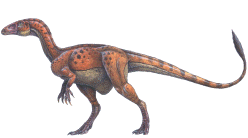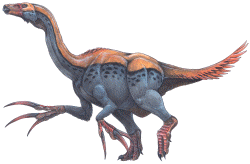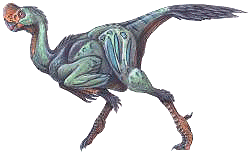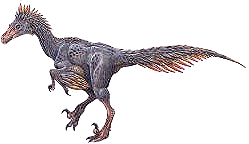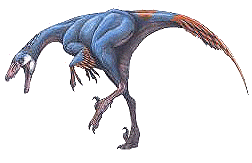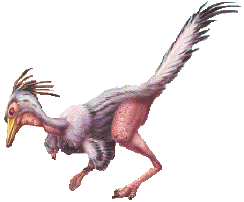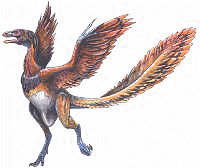| HOME PAGE | |
| Eras of Life | |
| Dinosaur Evolution | |
| Feathered Dinosaurs | |
| MYA | |
| Compsognathus |
150 |
| Sinosauropteryx |
130 |
| Therizinosauroidea | |
| Beipiaosaurus |
130 |
| Falcarius |
125 |
| Alxasaurus |
112 |
| Erlikosaurus |
95 |
| Therizinosaurus |
75 |
| Oviraptoridae | |
| Caudipteryx |
140 |
| Insicivosaurus |
120 |
| Avimimus |
95 |
| Chirostenotes |
70 |
| Rinchenia |
70 |
| Nomingia |
68 |
| Oviraptor |
67 |
| Dromaeosauridae | |
| Microraptor |
126 |
| Deinonychus |
120 |
| Buitreraptor |
90 |
| Unenlagia |
90 |
| Bambiraptor |
80 |
| Atrociraptor |
70 |
| Dromaeosaurus |
70 |
| Velociraptor |
67 |
| Tyrannosauridae | |
| Dilong |
130 |
| Troodontidae | |
| Mei long | 130 |
| Sinornithoides |
105 |
| Troodon |
67 |
| Alvarezsauridae | |
| Patagonykus | 95 |
| Shuvuuia | 80 |
| Alvarezsaurus | 80 |
| Parvicursor | 80 |
| Mononykus | 70 |
| Aves (birds) | |
| Protarchaeopteryx |
135 |
| Archaeopteryx |
147 |
| Recent Discoveries | |
| Juraventor Starki | |
| Tyrannosaurs | |
| Weird Dinosaurs | |
| Prehistoric Sea Monsters | |
| Pterosaurs | |
| Sauropods | |
![]()
| ||||||||||||||||||||||||||||||||||||||||
